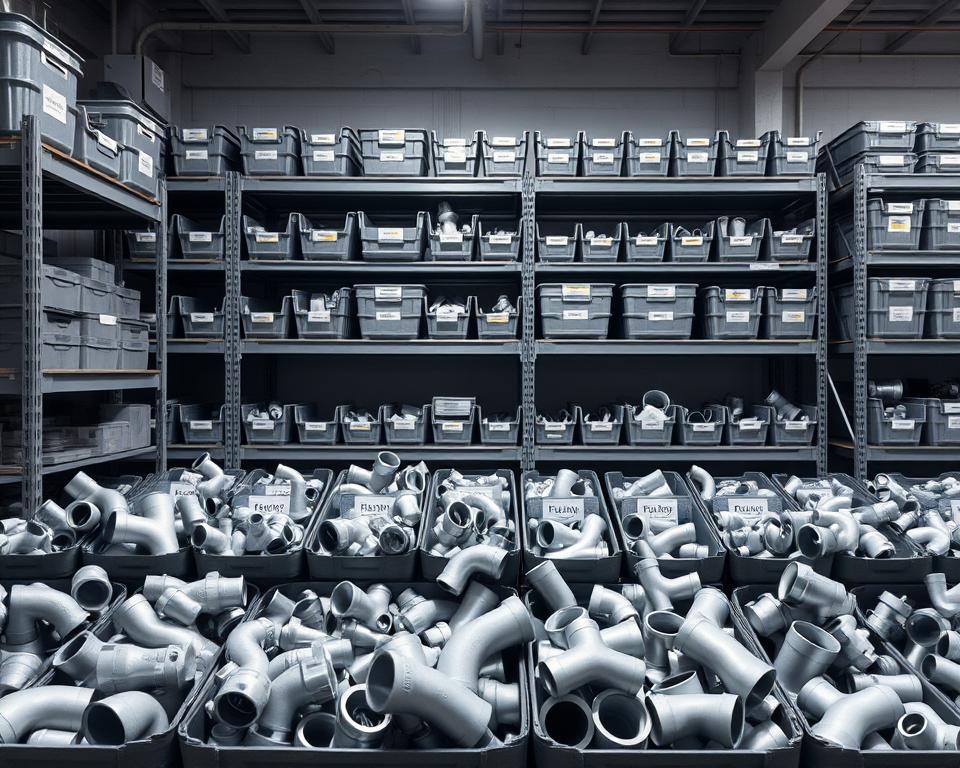Enhance Crops with Silicate Potash Supplement
Have you heard that nearly a third of international harvests could potentially be boosted with improved nutrients like K Silicate? This data point underscores the product’s potential to transform agricultural production. As growers deal with the challenges of global warming and soil erosion, K Silicate stands out as a cutting-edge solution. It not only improves harvests but also fosters stronger plants.
This discussion will dive into the benefits of potassium silicate fertilizer, its roles in crop cultivation, and how to enhance your farm’s capability. With insights from authorities, you’ll discover why K Silicate is vital for thriving crops. It lays the foundation for effective agricultural methods, bringing about higher production and enhanced harvest outcomes.
Key Highlights
- Potassium silicate fertilizer notably enhances crop resilience.
- It enhances light absorption, resulting in stronger growth.
- This fertilizer fortifies cell walls, ensuring resilience.
- Optimal application techniques are critical for achieving success.
- Grasping proper amounts guarantees effective nutrient delivery.
- Silicate Potash is effective in both soil and hydroponic systems.
- Utilizing potassium silicate boosts production in growing cannabis.
What is K Silicate?
Silicate Potash is a soluble in water salt essential for boosting crop production. It mixes K, important for plant health, with silica. This mixture improves plant health and growth. The special formulation of K Silicate fortifies plant cells and improves durability against climatic challenges.
This product’s flexibility makes it suitable for both soil-based cultivation and hydroponic farming. Its dissolvable potassium provides optimal nutrient uptake. This ensures crops absorb the necessary nutrients for optimal development.
Agriculturalists and horticulturists commonly use K Silicate for its power to enhance plant durability. By adding this product, they improve the well-being and robustness of their vegetation. This results in healthier plants and likely increased production.
Benefits of Potassium Silicate for Agricultural Yield
Potassium silicate is known for its extensive benefits in plant production. This supplement is pivotal for enhancing crop yield and vitality. Its special characteristics offer distinct gains that are vital for plant development.
Boosts Agricultural Durability
K Silicate notably enhances agricultural durability. SiO2 in this nutrient strengthens crops against water scarcity and pests. It prepares agriculture with a natural defense, enabling them to withstand environmental stress more efficiently.
Improves Plant Energy Conversion
The combination of potassium and silicon boosts light absorption. It stimulates chlorophyll production, helping plants to capture sunlight more optimally. This results in stronger growth and higher production, directly supporting plant growth and vitality.
Fortifies Plant Cells
K Silicate fortifies plant cells in crops. These reinforced tissues assist agriculture to endure environmental stress and pests more efficiently. This doesn’t just enhances crop durability but also encourages their vitality throughout various growth stages.
Applications of K Silicate in Farming
Silicate Potash is essential in farming, serving as a cornerstone in enhancing yields. It functions as a plant booster, facilitating plant growth and enhancing plant nutrition. Farmers widely use potassium silicate for different plants, including:
- Row crops like corn and soy
- Vine crops including vines and cucumbers
- Decorative vegetation for aesthetic appeal
- Water-based farming for water-based growing
Incorporating potassium silicate to agricultural practices improves crop vitality. It boosts plant defenses, causing better production and better crop quality. Additionally, it supports moisture preservation and supporting crops through tough conditions, enhancing their development throughout the year.
| Crop Type | Benefits of Silicate Potash | How to Apply |
|---|---|---|
| Large-Scale Plants | Increases drought resistance | Soil application or foliar spray |
| Vine Crops | Improves produce quality | Irrigation-based application |
| Decorative Plants | Improves vibrancy and size | Direct leaf application |
| Soilless Farming | Enhances nutrient consistency | Mixed in nutrient solution |
The varied uses of K Silicate in crop cultivation highlight its essential function. It ensures vitality in vegetation and boosts crop yields.
Using K Silicate
Correct use of silicate potash is essential for enhancing crop productivity. Understanding the correct application methods can greatly improve crop yields. Below, explore the different ways to use and recommended procedures for using this essential fertilizer into your agricultural practices.
Effective Techniques for Using
There are multiple options to use potassium silicate, giving you choices to suit different crop needs. Here are several best practices:
-
Topical Application: This approach requires combining K Silicate with aqua and spraying it on leaf surfaces. It guarantees rapid uptake by the plant.
-
Ground Application: Incorporating silicate potash to the earth near the base of plants renders it easily absorbed for root uptake.
-
Integration into Hydroponic Systems: For soilless farmers, integrate silicate potash in nutrient solutions to provide essential silicate to crops in a precise application.
The solubility of silicate potash aids quick utilization by plants through these approaches, making certain your crops the nutrients they require.
Effective Application Techniques
To fully utilize K Silicate, adhere to these best practices:
- Mix K Silicate with aqua as instructed by the manufacturer before utilization.
- Do not combine silicate potash with concentrated fertilizers in one solution. This might result in negative effects that reduce its potency.
- Frequently assess environmental conditions and crop vitality to determine the success of your application.
By following these practices and best practices, you can dramatically improve the efficacy of potassium silicate fertilizer. This will help grow healthier crops.
Silicate Potash Usage Levels
Knowing the optimal application rates for silicate potash is crucial to ensuring best possible agricultural success. Using the proper amount is essential to prevent low dosage or excessive usage. Both situations may impact crop success and yield negatively.
Knowing Usage Recommendations
Application rates for potassium silicate are influenced by multiple considerations, like the crop variety, its development phase, and the soil’s condition. It’s vital to adhere to usage recommendations from producers. These guidelines are formulated for particular plants and growing conditions. While a general range is often recommended, analyzing soil composition can offer more precise advice.
Factors Influencing Application Rates
Multiple elements are crucial in determining the right K Silicate application rates:
-
Soil Composition: Soil texture and formation impact nutrient availability.
-
Present Nutrient Status: Analyzing existing nutrient levels is necessary before using.
-
Plant Nutrient Needs: Different vegetation has unique nutrient needs that affect optimal application rates.
| Vegetation Type | Development Phase | Appropriate Usage Level (lbs/acre) |
|---|---|---|
| Vegetables | Transplanting | A range of 10-20 |
| Fruit Trees | Maturing Phase | Between 30-40 |
| Field Grains | Pre-Harvest | 15-25 |
| Flowers | Blooming | 5-10 |
Top Potassium Silicate Brands in the Market
Finding the best K Silicate options is vital for effective crop management. A diverse selection of companies offer unique characteristics and affordable rates, catering to various farming demands.
Popular Brands to Consider
Notable names among the leading K Silicate products are:
- AgSil Products
- AN (with products like Rhino Skin)
- VanBaerle Products
These producers are renowned for their nutrients designed to boost crop performance.
Product Features and Pricing
Knowing the benefits and costs of K Silicate options enables better product selection. For example:
| Company | Product Name | Concentration | SiO2 Percentage | Cost |
|---|---|---|---|---|
| AgSil | AgSil 16H Formula | 32% Potassium | Over Half | \$45.34 (4 lb package) |
| Advanced Nutrients | Rhino Skin Formula | 1% K | With Extra Silica | \$36.99 per liter |
| VanBaerle | Silicate 10 | 0-0-10 | SiO2 Not Indicated | \$29.99 for 5 lbs |
This comparison illustrates the variety in attributes and pricing across popular products. Careful consideration of these elements ensures the optimal application of K Silicate in farming.
K Silicate’s Role in Crop Vitality
Silicate Potash is crucial for boosting plant health, boosting vigor and durability. It reinforces crop tissues, leading to stronger defenses and quicker development. This compound silicon benefits crops by reinforcing stems and leaves, crucial for enduring harsh weather and fungal threats.
Additionally, silicate potash enhances soil hydration and nutrient uptake in crops. Robust agriculture uptake essential elements more efficiently and survive climatic challenges better. This flexibility supports environmental balance, supporting eco-friendly practices.
Understanding K Silicate’s significance inspires growers and plant enthusiasts to integrate it in their cultivation plans. By doing so, they produce more resilient plants that can flourish under challenging conditions.
| Factor | Effects of K Silicate |
|---|---|
| Plant Structure | Fortifies plant tissues, enhancing crop durability |
| Health Defenses | Enhanced ability to withstand diseases and pests |
| Development Speed | Accelerates development and plant progression |
| Environmental Durability | Improves resistance to extreme weather |
| Mineral Absorption | Enhances nutrient intake of vital elements |
| Water Retention | Improves soil moisture retention for stronger plants |
K Silicate in Soilless Cultivation
In the realm of hydroponics, regulating plant diet is essential for optimal plant growth. K Silicate is a important nutrient that enhances the efficacy of hydroponic systems. It’s especially beneficial during key development stages, resulting in stronger plants and higher yields.
Applying K Silicate in Water-Based Cultivation
Integrating silicate potash into soilless setups at crucial intervals boosts its benefits. The budding phase is crucial, as vegetation then require more vital elements. Using silicate potash at this time leads to several positive outcomes:
-
Enhanced root growth: A strong root network supports more efficient nutrient uptake.
-
Better nutrient synergy: K Silicate optimizes how crops use nutrients in water-based farming methods.
-
Increased resistance to environmental stress: Vegetation become more resilient to temperature and humidity changes.
-
Faster plant progression: Plants grow faster and stronger with the proper level of K Silicate.
Adhering to these recommendations ensures optimal application of K Silicate in your hydroponic setup. The moment and dosage of this nutrient dramatically affect its success.
| Growth Stage | Recommended Dosage | Likely Results |
|---|---|---|
| Early Growth | Between 0.5-1 ml/L | Healthy root development |
| Mid-Growth | A range of 1-2 ml/L | Enhanced nutrient absorption |
| Bloom | Between 2-3 ml/L | Enhanced crop production and strength |
K Silicate in Marijuana Farming
The use of potassium silicate fertilizer has revolutionized marijuana farming. This nutrient brings unique positive effects tailored to marijuana crops. It improves plant health, improves crop resilience, and leads to better production.
Maximizing Yields with K Silicate
Potassium silicate helps with increasing harvests by fostering a robust plant architecture. Elevated silica levels bring about sturdier stems, able to holding up thick growth. Additionally, it boosts resin output, crucial for the strength and grade of the buds. This results in better production and enhanced cannabis farming advantages valued by farmers.
-
Robust plant structure: Stronger plant bases bear more weight.
-
Enhanced resin output: Enhanced plant output with enhanced potency.
-
Enhanced durability: Power to survive tough conditions.
-
Improved plant vitality: Stronger crops lead to better harvests.
Incorporating potassium silicate fertilizer delivers a significant benefit for cannabis cultivators seeking to improve their cultivation methods.
Where to Get K Silicate
Growers in need of silicate potash have several suppliers to select. Nearby agriculture hubs are a common source, providing easy access to these nutrients to growers in the area. For those opting for digital purchases, numerous retailers sell silicate potash, particularly targeting hobbyists.
Popular companies like Custom Hydro Nutrients, and AN lead the market. They provide a variety of formulations tailored for both home growers and big agricultural projects. Their focus on high standards ensures successful agriculture.
When choosing silicate potash, consider both the cost and the item’s characteristics. Below is a table of a few options:
| Supplier | Product Type | Cost per Package | Target Market |
|---|---|---|---|
| CHN | Dissolvable K Silicate | \$20 for 1 liter | Hobbyists and Professionals |
| Advanced Growth Solutions | Powdered Silicate Potash | \$25 for 1 kg | Small-Scale Farmers |
| Local Co-op | Granulated Silicate Potash | \$15/2 kg | Large-Scale Agriculture |
Being aware of the sources for potassium silicate helps growers in choosing the right options for their nutrient requirements. This leads to enhanced farming success.
Advantages of K Silicate in Flowering Plants
silicate potash is a revolutionary nutrient for blooming vegetation and fruiting vegetation. It greatly improves flower size, which doesn’t just enhances beauty but also enhances reproductive success. This leads to a stronger agricultural development.
For produce growth, K Silicate is a strong performer. It enhances fruit yield and quality, making the fruits more valuable in the market. The nutrient goes beyond growth; it also enhances taste and feel, enhancing the overall market value.
Additionally, K Silicate enhances solar energy conversion, causing higher crop yields. Silicic acid, a vital element, increases durability. This enables blooms and produce to more effectively resist external pressures, bringing about prolonged fruiting seasons and more abundant harvests.
Incorporating K Silicate into your fertilization strategy can dramatically improve flowering and yield. It develops a more resilient plantation or field, making it a leading pick for those pursuing maximum production.
Difficulties and Factors in K Silicate Use
Silicate Potash is a powerful tool for enhancing plant health. However, its effective use depends on tackling specific issues. Getting the proper amount is vital. Applying too much may cause plant issues, hampering crop development.
Ensuring compatibility with other fertilizers is just as important. Before combining different fertilizers, verifying their ability to work together is important. Poor pairings could lower the fertilizer’s effectiveness. Understanding these factors is crucial to optimizing nutrient management.
Enhancing user knowledge about these considerations can dramatically improve silicate potash use. By making informed decisions, growers can cultivate stronger crops and increase production.
| Obstacle | Element | Guidelines for Proper Utilization |
|---|---|---|
| Excessive Application | Chemical Disruption | Follow guidelines for application rates; regularly analyze soil. |
| Compatibility Issues | Unwanted Effects | Research product compatibility before mixing; seek professional advice. |
| Insufficient Information | Suboptimal Results | Attend training sessions; research successful applications. |
Conclusion
The importance of potassium silicate fertilizer in crop production is immense. It delivers important gains for plant growth. This fertilizer improves plant resilience and vitality, bringing about thriving plants across diverse circumstances.
Moreover, potassium silicate supports in optimal farming practices. It provides essential elements that safeguard crops from water scarcity and pathogens. Effective utilization of this product enables growers to boost yields, resulting in abundant harvests.
Looking ahead to sustainable agriculture, silicate potash appears to be a crucial product for growing robust crops. By incorporating this nutrient, farmers can cultivate more productive plants. This strategy supports both eco-friendly practices and financial success in farming operations.



